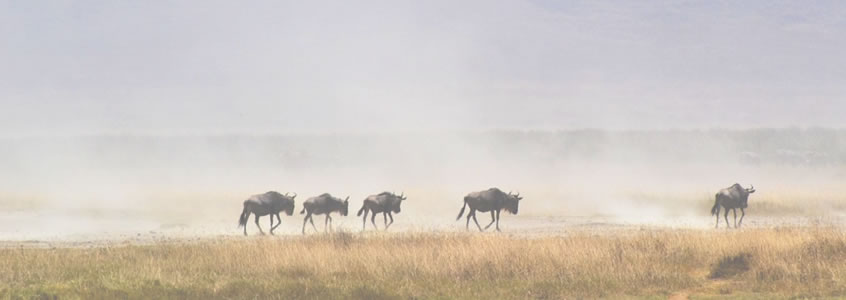
Ngorongoro, Tanzania
Ngorongoro is the world’s largest intact volcanic caldera that’s not underwater. Some people call it the eighth wonder of the world. It’s home to the densest population of large animals anywhere. And it’s basically a microcosm of the Serengeti.
With walls that stretch nearly 2,000 feet up into the great East African skies, the crater can seem like a world unto itself. And it pretty much is. The caldera is just about 10 miles wide, but it includes most of the ecosystems found in the greater Serengeti.
Attractions
Within the Conservation Area lies the Ngorongoro Crater, known as the eighth natural wonder of the world. Virtually all the Big Five live or travel within the crater rim, while along its edge, Masaai tribesmen graze goats and cattle on the highland plateaus.
Ngorongoro is one of the easiest places in all of Africa to spot the Big Five. Head to the acacia and quinine tree forests early in the morning to spot the endangered black rhino.
The waters of Lake Makatare are home to thousands of migratory flamingos, while the swamps are the spots to look for hippos wallowing in the cool mud.
Best time to visit
The best times to visit Serengeti National Park are from June to September since animals are more easily seen, although you should plan your trip around the movement of the Migration.
Best time to go: June to September for general wildlife viewing
High Season: Most of the year - July to March (The Ngorongoro Crater will have crowds)
Low Season: April and May (The only time when the crater has few crowds)
Best Weather: June to October (Rainfall is little to none)
Worst Weather: March and April (Peak of wet season)
Getting to Ngorongoro
Arusha is the gateway to the Ngorongoro Conservation Area. The town can be reached easily by scheduled or charter flights directly to Arusha or connecting through Dar es Salaam. It is also accessible by road.
